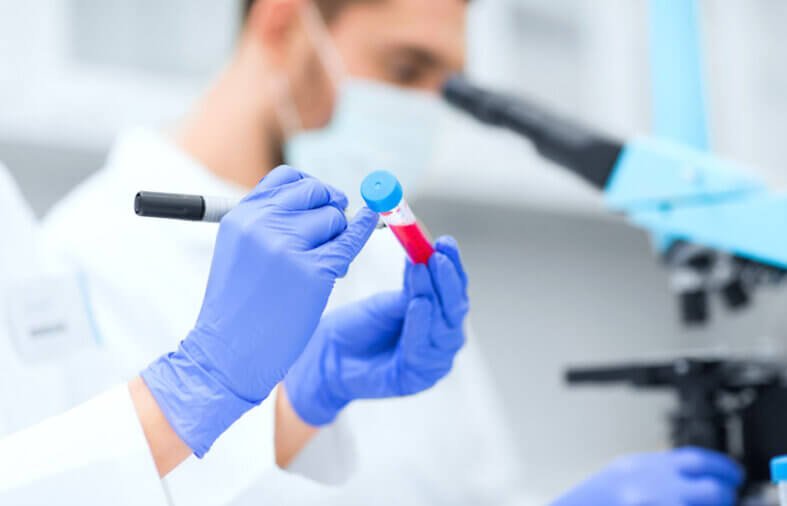In scientific laboratories, precision and safety are extremely important, and a lab label plays a critical role in ensuring both. These small, often overlooked tags provide crucial information about the contents of containers, storage requirements, and safety hazards. Without clear and accurate labeling, laboratory procedures could become chaotic, unsafe, and prone to some dangerous errors.
How much do you know about the importance of lab labels, the various types available, and best practices for using them effectively? Well, this article will tell you all you need to know, so keep reading!
Why Lab Labels Matter
Lab environments often involve handling hazardous chemicals, biological materials, and sensitive equipment. Proper labeling minimizes risks and ensures safe, efficient operation. As such, lab labels serve multiple purposes:
- Safety: They communicate potential hazards, such as toxicity, flammability, or biohazards. This information ensures that lab personnel can handle substances with the necessary precautions and use personal protective equipment (PPE) appropriately.
- Organization: In busy labs, mislabeling or lack of labeling can lead to misplaced or misused samples, which can result in data inaccuracies or contamination. Labels help ensure that samples, reagents, and chemicals are stored correctly and easily identifiable.
- Compliance: Many industries are subject to strict regulatory requirements. Accurate labeling helps labs remain compliant with local, national, and international standards set by organizations such as OSHA, the FDA, and ISO.
- Efficiency: Clear labeling reduces the time spent searching for the right materials, improving workflow and minimizing the risk of procedural delays.
Types of Lab Labels
Lab labels come in various types, each designed to meet the specific needs of different laboratory environments. Below are some of the most commonly used lab labels:
1.Chemical Labels
These labels are designed for containers that store chemicals. They include information such as the chemical name, concentration, storage conditions, and hazard symbols. The Globally Harmonized System (GHS) mandates that chemical labels include pictograms and safety phrases that describe the specific dangers of the chemicals being handled, such as corrosiveness, toxicity, or flammability.
2.Cryogenic Labels
Cryogenic labels are essential for labeling samples or substances that are stored at extremely low temperatures, often in liquid nitrogen (-196°C). Standard labels tend to lose adhesion or become brittle under such conditions, which is why cryogenic labels are designed to withstand freezing temperatures without losing legibility or adhesion.
3.Autoclave Labels
Autoclaves are used to sterilize equipment and substances at high temperatures, often exceeding 120°C. Regular labels may peel or become unreadable in such environments, making autoclave labels indispensable. These labels are heat-resistant and can endure exposure to moisture and pressure, ensuring that critical information remains intact.
4.Biological Labels
These labels are used for identifying biological samples, such as blood, tissue, or bacterial cultures. Biological labels often feature biohazard symbols and include information about the sample’s origin, date of collection, and any special handling instructions. These labels are typically affixed to vials, petri dishes, or culture plates.
5.Tamper-Evident Labels
In certain labs, particularly those dealing with pharmaceuticals or sensitive research materials, tamper-evident labels are necessary to ensure the integrity of samples. These labels are designed to leave a visible mark or residue if they are removed or tampered with, ensuring the authenticity and safety of the contents.
Best Practices for Lab Labeling
Now that we understand the importance and types of lab labels, it’s crucial to implement best practices to ensure they are used effectively in a laboratory setting. Below are key considerations for using lab labels properly:
1.Clear and Consistent Information
All labels should be clear, legible, and written in plain language. Labels must include all pertinent information, such as the contents of the container, date of preparation, and any expiration dates. In addition, labels should be consistent in format, using standardized symbols and abbreviations to avoid confusion.
2.Durability
It is essential that the labels used can withstand the conditions they are exposed to in the lab. For example, chemical labels should resist solvents and exposure to light, while cryogenic labels should remain legible at low temperatures. Using high-quality, durable labels prevents deterioration, which can lead to misidentification or loss of important information.
3.Proper Adhesion
The adhesive used on lab labels is just as important as the information they carry. Labels must adhere securely to various surfaces, including glass, plastic, and metal. Specialized adhesives should be chosen based on the lab’s conditions, such as moisture levels or temperature extremes.
4.Legibility Over Time
Some labels may need to remain on containers for extended periods. In these cases, the ink and material of the label should be resistant to fading or smudging over time. This is particularly important for long-term storage of chemicals or biological samples, where critical information must remain intact for months or even years.
5.Integration with Lab Management Systems
In modern laboratories, many organizations are moving towards digital lab management systems (LIMS) for tracking samples and data. Incorporating barcodes or QR codes into lab labels can streamline this process, allowing for easy tracking and data integration. Lab personnel can scan the labels to instantly retrieve important information from the LIMS, improving accuracy and efficiency.
Conclusion
Lab labels may seem like a small detail in the grand scheme of scientific research, but their importance cannot be overstated. Proper labeling ensures safety, compliance, and efficiency in laboratory environments, reducing the risk of accidents and ensuring the integrity of experiments. By understanding the types of labels available and following best practices, lab personnel can create an organized, safe, and compliant working environment.








